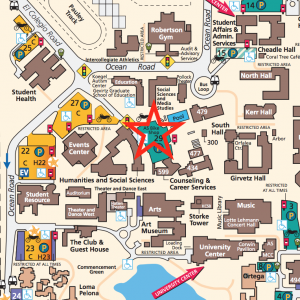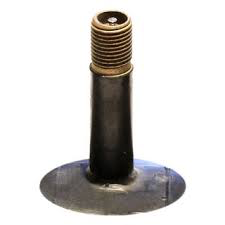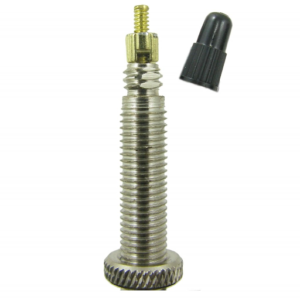Explore this page to see our most frequently asked questions; whether it be about the shop, what kind of bike tube you have, to even applying to be an employee.
What are the shop's business hours?
During the UCSB school year, the AS Bike Shop is open Monday - Wednesday 10:00 AM - 4:00 PM and Friday 10:00 AM - 3:00 PM.
During the summer, the shop is open Monday - Thursday 10:00 AM - 3:00 PM. The shop is closed on UC holidays.
Where is the shop located?
Is the shop only open to UCSB students?
The AS Bike Shop is open to the public. We pride ourselves on providing vital services to everyone in our community, not just UCSB students.
How do I apply to work at the AS Bike Shop?
Our application is currently on Handshake. Because the shop is a division of Associated Students, the mechanic position is only open to UCSB undergraduate students. Please use your student login to log on to Handshake. We look at applications on a quarterly basis. Make sure you apply for the correct position. If you do not hear from us, feel free to resubmit an application or follow up in person.
Here is the link to our application:
UCSB Associated Students Bike Mechanic — Santa Barbara, CA Part-Time On Campus Student Employment
Can I be in the mechanic’s area?
Customer safety is one of our top priorities. Therefore, due to safety concerns, no one but mechanics are allowed in the mechanic’s area without prior consent. Please be respectful and offer the mechanics proper space to work on your bike while we keep you safe. If you want to learn more about the process that is happening on your bike, inform the mechanic and they’ll work through a plan with you to do so while maintaining customer safety.
What kinds of services does the shop offer?
We offer an array of repair services ranging from simple tube/tire repairs to complete overhauls and tune-ups. Please refer to our services tab for more information and prices.
Line repair vs. Ticket repair?
Line repairs are smaller repairs that mechanics can immediately get started on while customers wait at the shop. Line repairs generally take 10-25 minutes but may take longer. We ask all customers to stay at the shop for the duration of their repair.
Examples for line repairs include but are not limited to: tube replacements, tire replacements, chain replacements, chain tightening, brake cable and housing replacements, brake adjustments. Line repairs are ultimately done at the discretion of the mechanic at that given time and whether it can be done in a timely manner.
Ticket repairs are more time-consuming repairs that mechanics will work on once we finish all the line repairs; ticket repairs are also an option for customers who must leave their bike at the shop. In the case of a ticket repair, mechanics will collect the customer’s name and number, talk them through all the repairs needed, give a price estimate and an approximate due date, and bring the bike into the shop. The shop cashier will call the customer’s number when the bike is ready. Ticket repairs can take anywhere from a day to over a week, depending on how busy the shop is, and whether or not parts need to be ordered.
Examples for ticket repairs include but are not limited to: hub overhauls, headset overhauls, bottom bracket overhauls, tune-ups, certain shifter replacements, repairs that involve ordering an out-of-stock bike part.
Can I leave my bike while it is being worked on at the shop?
We ask all customers to stay at the shop for the duration of their line repair because it allows maximum efficiency for our mechanics to ask customers about their bike’s history and to return bikes as soon as the repair is done, so that mechanics can get to the next bike. In our busy work environment, in the case that the mechanic can not find the bike owner, it is very easy to misplace the bike; and if the mechanic happens to clock out before the owner comes back, the hand-over can make it difficult for other mechanics to recognize the owner when they return to the shop.
How do I pick up my bike when it is ready?
You can go directly to the cashier with the yellow slip given to you at the time of drop off. If you have lost your yellow slip, please bring an ID to verify that you are the person to whom the bike belongs to.
Do you provide bike storage?
We do not provide bike storage unless we are working on your bike as a ticket repair. In this case, your bike will be safely stored until it is picked up.
Does the shop rent or sell bikes?
The AS Bike Shop does not currently rent or sell bikes.
Do you purchase used bikes?
We do not purchase used bikes, but we do take in donations for our new hires to train and practice repairs on. If you would like to donate a bike, please call us in advance. You can also check out St. George Youth Center YMCA as they provide bikes for children.
Can I buy bike parts and accessories through the shop?
Yes, you can. Come visit the shop during business hours and collaborate with one of the mechanics to help you find the part that is needed. We have a wide variety of parts available for purchase on-site which can be installed by a mechanic for a small labor fee. However, there is typically a one-two week delay for ordering special parts that are not currently in stock on-site.
Can I register my bike at the shop?
Unfortunately you cannot since we do not run that program. However, you can register your bike at the CSO office which can be found in Building 300.
The Building 300 Office is located west of South Hall and south of the Swimming Pool and Old Gym.
Here is the link for more information: https://www.police.ucsb.edu/cso/bicycle-program
Does the bike shop cut locks?
We do not cut locks of any kind outside of the shop premises, but other bike shops located in IV do cut u-locks. We only cut locks if you are able to bring the bike to the bike shop for a flat rate, $15 fee.
Do you work on e-bikes?
We do not work on electric bikes under any circumstance.
Can I work on my bike in the shop or learn to do a repair?
When space is available during open hours, the shop tools and stands are available for anyone who has signed a waiver of liability to use. Use of the shop for personal projects operates on a first come, first serve basis. Our mechanics can gladly give you advice or walk you through the process of a repair, as long as we are not busy helping other customers in line.
Can I get my bike assembled at the bike shop?
Yes, the bike shop does assemble bikes at a flat rate, $40 fee.
What does a tune-up entail?
A tune-up entails a thorough cleaning of the bike, spot truing of the wheels, adjustment of bearing systems, adjustment of gears and brakes, and lubrication.
How can I get air and oil for my bike?
Air and oil are provided free of charge at the AS Bike Shop.
During open hours, we provide a compressed air hose which is compatible with Schrader valves and regulated at 60 PSI on the south side of the shop. A self-service oiling station is located outside of the bike shop near the sink during business hours.
Pumps for both Schrader and Presta valves are available outside the shop Monday-Sunday during the school year and Monday-Sunday during summer.
Air is not available on weekends for maintenance reasons.
How do I pump my tires?
First, find out what kind of valve you have. Refer to “what kind of valve do I have?” info sheet below. Next, look on the side wall of the tire for the recommended PSI for your tires.
For Presta valves:
- Unscrew the captive nut. This allows you to add or release pressure to the inner tube.
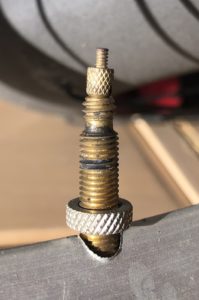
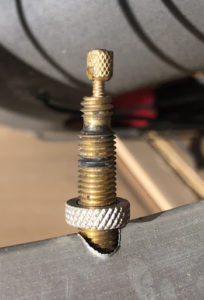
- After this, follow the procedure below for the respective type of pump, but be sure to use a Presta pump with a smaller, deeper hole.
- After inflating and removing the pump from the valve, screw the captive nut back in to lock the valve so air cannot escape.
For Schraeder valves:
With screw-on pumps:
- Twist the chuck of the pump onto the valve. Make sure to use a Schraeder pump, with a larger, shallower hole. Inflate tire to recommended psi, using the pressure gauge as a guide. After inflating, simply unscrew the chuck and remove the pump from the valve.
With flip-lever pumps:
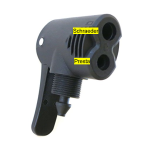
- Insert the pump onto the valve. While pressing down onto the valve, flip the lever open. Make sure to use a Schraeder pump with a larger, shallower hole. Inflate tire to recommended psi, reading the pressure gauge.
With air compressor [available during working hours]:
- The shop compressor is rated for 65 PSI. If your tires have a pressure rating around 60-70 PSI, you can go around the corner of the shop to the compressor shed. The hose has a nozzle on the end that fits Schraeder valves. Press this nozzle onto the Schraeder valve, making sure that it is pressed flat rather than at an angle. Air should start flowing. As you inflate the tire, make sure there are no bulges in the side of the tire that can indicate that it is about to explode. If you notice any bulges or tire damage, deflate the tire until it no longer threatens to pop and ask a mechanic for help.
What kind of valve do I have?
What kind of valve do I have?
Why does my valve go into my tire when I try to put air in?
If your bike tires are severely under-pressurized, there will be no force holding the tube valve in place. It is possible to push the valve into the interior of the tire. If this is happening, pushing a pump onto the valve may be difficult. If this is the case, here are the steps you should take:
- Press into the tire, opposite the valve, so that you are holding the valve in place. If you try to push the valve back in, you should feel the force on your hand holding the tire, and the valve should remain held in place.
- After you insert the valve into the pump, make sure that the bead of the tire remains inside the rim of the wheel and that there are no bulges in the walls of the tire.
When do I use oil for my bike and is it okay to use WD-40?
WD-40 is a penetrating oil and (W)ater (D)isplacing spray. It ideally should only be used for getting stuck or rusted parts moving again. It will not protect your bike from rust. In order to keep your bike properly lubricated, we recommend using a thin oil such as Tri-flow that is free of charge, located in the basket at our self-service oil station. This oil serves as an actual lubricant to keep your drivetrain running smoothly and to protect your components from rust.
Can I check out oil?
If you need oil, you can check out oil with a mechanic, but you must be able to leave your ID as collateral until the oil bottle is returned.
Will my bike get stolen if I bring it on campus?
Taking into consideration the vast amount of bikes on campus in relation to the numerous unguarded bike racks throughout campus, there is always a possibility that your bike and/or bike parts can get stolen. Please always make sure to properly lock your bike, and if possible, we would highly suggest to not leave your expensive and/or sentimental bikes unattended, with or without a lock.
What are the shop's business hours?
During the UCSB school year, the AS Bike Shop is open Monday - Wednesday 10:00 AM - 4:00 PM and Friday 10:00 AM - 3:00 PM.
During the summer, the shop is open Monday - Thursday 10:00 AM - 3:00 PM. The shop is closed on UC holidays.
Where is the shop located?
Is the shop only open to UCSB students?
The AS Bike Shop is open to the public. We pride ourselves on providing vital services to everyone in our community, not just UCSB students.
How do I apply to work at the AS Bike Shop?
Our application is currently on Handshake. Because the shop is a division of Associated Students, the mechanic position is only open to UCSB undergraduate students. Please use your student login to log on to Handshake. We look at applications on a quarterly basis. Make sure you apply for the correct position. If you do not hear from us, feel free to resubmit an application or follow up in person.
Here is the link to our application:
UCSB Associated Students Bike Mechanic — Santa Barbara, CA Part-Time On Campus Student Employment
Can I be in the mechanic’s area?
Customer safety is one of our top priorities. Therefore, due to safety concerns, no one but mechanics are allowed in the mechanic’s area without prior consent. Please be respectful and offer the mechanics proper space to work on your bike while we keep you safe. If you want to learn more about the process that is happening on your bike, inform the mechanic and they’ll work through a plan with you to do so while maintaining customer safety.
What kinds of services does the shop offer?
We offer an array of repair services ranging from simple tube/tire repairs to complete overhauls and tune-ups. Please refer to our services tab for more information and prices.
Line repair vs. Ticket repair?
Line repairs are smaller repairs that mechanics can immediately get started on while customers wait at the shop. Line repairs generally take 10-25 minutes but may take longer. We ask all customers to stay at the shop for the duration of their repair.
Examples for line repairs include but are not limited to: tube replacements, tire replacements, chain replacements, chain tightening, brake cable and housing replacements, brake adjustments. Line repairs are ultimately done at the discretion of the mechanic at that given time and whether it can be done in a timely manner.
Ticket repairs are more time-consuming repairs that mechanics will work on once we finish all the line repairs; ticket repairs are also an option for customers who must leave their bike at the shop. In the case of a ticket repair, mechanics will collect the customer’s name and number, talk them through all the repairs needed, give a price estimate and an approximate due date, and bring the bike into the shop. The shop cashier will call the customer’s number when the bike is ready. Ticket repairs can take anywhere from a day to over a week, depending on how busy the shop is, and whether or not parts need to be ordered.
Examples for ticket repairs include but are not limited to: hub overhauls, headset overhauls, bottom bracket overhauls, tune-ups, certain shifter replacements, repairs that involve ordering an out-of-stock bike part.
Can I leave my bike while it is being worked on at the shop?
We ask all customers to stay at the shop for the duration of their line repair because it allows maximum efficiency for our mechanics to ask customers about their bike’s history and to return bikes as soon as the repair is done, so that mechanics can get to the next bike. In our busy work environment, in the case that the mechanic can not find the bike owner, it is very easy to misplace the bike; and if the mechanic happens to clock out before the owner comes back, the hand-over can make it difficult for other mechanics to recognize the owner when they return to the shop.
How do I pick up my bike when it is ready?
You can go directly to the cashier with the yellow slip given to you at the time of drop off. If you have lost your yellow slip, please bring an ID to verify that you are the person to whom the bike belongs to.
Do you provide bike storage?
We do not provide bike storage unless we are working on your bike as a ticket repair. In this case, your bike will be safely stored until it is picked up.
Does the shop rent or sell bikes?
The AS Bike Shop does not currently rent or sell bikes.
Do you purchase used bikes?
We do not purchase used bikes, but we do take in donations for our new hires to train and practice repairs on. If you would like to donate a bike, please call us in advance. You can also check out St. George Youth Center YMCA as they provide bikes for children.
Can I buy bike parts and accessories through the shop?
Yes, you can. Come visit the shop during business hours and collaborate with one of the mechanics to help you find the part that is needed. We have a wide variety of parts available for purchase on-site which can be installed by a mechanic for a small labor fee. However, there is typically a one-two week delay for ordering special parts that are not currently in stock on-site.
Can I register my bike at the shop?
Unfortunately you cannot since we do not run that program. However, you can register your bike at the CSO office which can be found in Building 300.
The Building 300 Office is located west of South Hall and south of the Swimming Pool and Old Gym.
Here is the link for more information: https://www.police.ucsb.edu/cso/bicycle-program
Does the bike shop cut locks?
We do not cut locks of any kind outside of the shop premises, but other bike shops located in IV do cut u-locks. We only cut locks if you are able to bring the bike to the bike shop for a flat rate, $15 fee.
Do you work on e-bikes?
We do not work on electric bikes under any circumstance.
Can I work on my bike in the shop or learn to do a repair?
When space is available during open hours, the shop tools and stands are available for anyone who has signed a waiver of liability to use. Use of the shop for personal projects operates on a first come, first serve basis. Our mechanics can gladly give you advice or walk you through the process of a repair, as long as we are not busy helping other customers in line.
Can I get my bike assembled at the bike shop?
Yes, the bike shop does assemble bikes at a flat rate, $40 fee.
What does a tune-up entail?
A tune-up entails a thorough cleaning of the bike, spot truing of the wheels, adjustment of bearing systems, adjustment of gears and brakes, and lubrication.
How can I get air and oil for my bike?
Air and oil are provided free of charge at the AS Bike Shop.
During open hours, we provide a compressed air hose which is compatible with Schrader valves and regulated at 60 PSI on the south side of the shop. A self-service oiling station is located outside of the bike shop near the sink during business hours.
Pumps for both Schrader and Presta valves are available outside the shop Monday-Sunday during the school year and Monday-Sunday during summer.
Air is not available on weekends for maintenance reasons.
How do I pump my tires?
First, find out what kind of valve you have. Refer to “what kind of valve do I have?” info sheet below. Next, look on the side wall of the tire for the recommended PSI for your tires.
For Presta valves:



- Unscrew the captive nut. This allows you to add or release pressure to the inner tube.


- After this, follow the procedure below for the respective type of pump, but be sure to use a Presta pump with a smaller, deeper hole.
- After inflating and removing the pump from the valve, screw the captive nut back in to lock the valve so air cannot escape.
- Twist the chuck of the pump onto the valve. Make sure to use a Schraeder pump, with a larger, shallower hole. Inflate tire to recommended psi, using the pressure gauge as a guide. After inflating, simply unscrew the chuck and remove the pump from the valve.

- Insert the pump onto the valve. While pressing down onto the valve, flip the lever open. Make sure to use a Schraeder pump with a larger, shallower hole. Inflate tire to recommended psi, reading the pressure gauge.
- The shop compressor is rated for 65 PSI. If your tires have a pressure rating around 60-70 PSI, you can go around the corner of the shop to the compressor shed. The hose has a nozzle on the end that fits Schraeder valves. Press this nozzle onto the Schraeder valve, making sure that it is pressed flat rather than at an angle. Air should start flowing. As you inflate the tire, make sure there are no bulges in the side of the tire that can indicate that it is about to explode. If you notice any bulges or tire damage, deflate the tire until it no longer threatens to pop and ask a mechanic for help.
What kind of valve do I have?
What kind of valve do I have?
Why does my valve go into my tire when I try to put air in?
If your bike tires are severely under-pressurized, there will be no force holding the tube valve in place. It is possible to push the valve into the interior of the tire. If this is happening, pushing a pump onto the valve may be difficult. If this is the case, here are the steps you should take:
- Press into the tire, opposite the valve, so that you are holding the valve in place. If you try to push the valve back in, you should feel the force on your hand holding the tire, and the valve should remain held in place.
- After you insert the valve into the pump, make sure that the bead of the tire remains inside the rim of the wheel and that there are no bulges in the walls of the tire.
When do I use oil for my bike and is it okay to use WD-40?
WD-40 is a penetrating oil and (W)ater (D)isplacing spray. It ideally should only be used for getting stuck or rusted parts moving again. It will not protect your bike from rust. In order to keep your bike properly lubricated, we recommend using a thin oil such as Tri-flow that is free of charge, located in the basket at our self-service oil station. This oil serves as an actual lubricant to keep your drivetrain running smoothly and to protect your components from rust.
Can I check out oil?
If you need oil, you can check out oil with a mechanic, but you must be able to leave your ID as collateral until the oil bottle is returned.
Will my bike get stolen if I bring it on campus?
Taking into consideration the vast amount of bikes on campus in relation to the numerous unguarded bike racks throughout campus, there is always a possibility that your bike and/or bike parts can get stolen. Please always make sure to properly lock your bike, and if possible, we would highly suggest to not leave your expensive and/or sentimental bikes unattended, with or without a lock.
